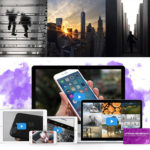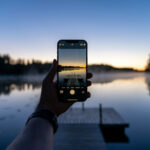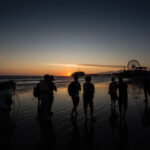Timelapse videos that cover a day to night transition can be very beautiful, but also very challenging technically. There are several different ways to handle the changing exposure when creating a timelapse, but perhaps one of the best methods is bulb ramping. This method gives you an overall control of the timelapse settings while making minor changes to your camera automatically over time. This hybrid of manual and automatic control can give you very smooth transitions in your timelapse. Photographer Joel Schat explains how the process works in addition to explaining step by step how you can create your own timelapse videos using bulb ramping:
Though handling the changing exposure is probably the hardest challenge, there are several other things to keep in mind if you want to capture an amazing timelapse:
- Composition – Unlike a still image, subjects will be coming in and out of the frame and moving within the frame during the duration of your timelapse. Imagining the motion that will occur in your scene takes a different mindset that capturing a regular still image. Make sure you consider the people, vehicles, lights, and sky when you’re framing your scene.
- Timing – How long do you want your timelapse video to last? Ten seconds? Ten minutes? How often you capture images determines how fast your video will play back. More images = a longer video. Fewer images = a shorter video.
- White Balance – Colors and lighting are going to change throughout your timelapse so it’s best to shoot in RAW if you want to correct these variations later. RAW gives you much more control over the white balance in post than JPEG does.
- Environment – Don’t forget that you will be waiting around for a good amount of time while your timelapse is being created. This means check the weather ahead of time and make sure you know if and when there are any events in the area you’re shooting at and when they start and end. Also keep in mind the security risk. There may be certain places that are too risky to shoot at during nighttime.

Bulb ramping can be used with firmware, software, or an external intervalometer.
For Further Training on Time-lapse Photography:
There is an in-depth guide (146 pages) to shooting, processing and rendering time-lapses using a dslr camera. It can be found here: Time-lapse Photography Guide
Like This Article?
Don't Miss The Next One!
Join over 100,000 photographers of all experience levels who receive our free photography tips and articles to stay current:






Leave a Reply